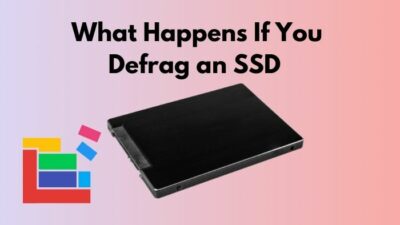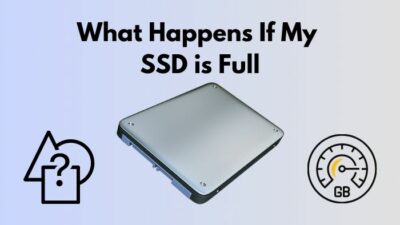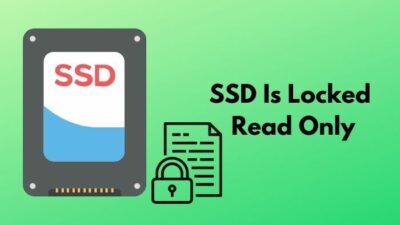It’s been quite some time since you used SSD and wondered if it will get corrupted? Or you are already facing some issues with your SSD and searching for remedies.
As a graphics designer, I have been there more times than you think. The so burning question is,
Can SSD get corrupted?
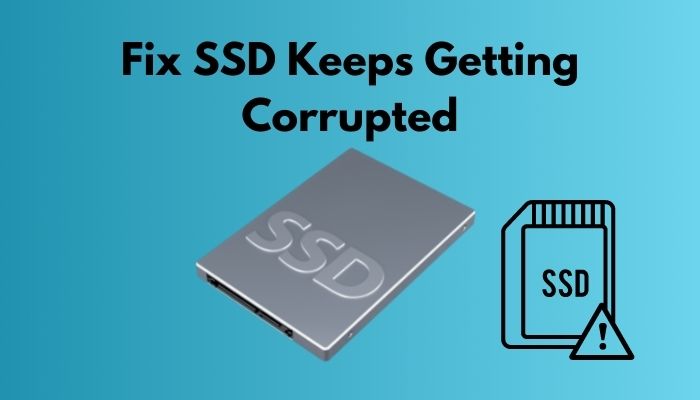
For more information on corruption and corrupted SSDs and how to fix your SSD stay tuned as I will be giving a tour around everything you need to know.
How Do SSD’s Get Corrupted?
HDDs have moving parts, whereas SSDs don’t. So does that mean SSDs are less prone to corruption or problems? Of course not! Though your SSD does not have moving parts, it can still get corrupted in many ways, and I am mentioning some of them here:
- SSDs rely on their capacitors to work. So, during any operations, if the continuous current flow is interrupted, SSD may face some issues.
- A power failure may lead to data corruption if not drive corruption.
- SSDs have a limited number of reading or writing cycles, which is common in these kinds of storage devices. Although, the read or write cycles consumption entirely depends on how you use the SSD and is not a prime concern if you are looking to buy an SSD.
- Hardware corruption may also be caused by malware or virus attacks.
One of the major misconceptions about SSD is, it is more prone to corruption than HDD. This is not true at all!
Yes, SSDs have limitations, but comparing them with Hard Disk Drives should not be viable. Consisting of moving parts, HDDs need more care and careful handling. So if you are being confused between an SSD and HDD, I strongly suggest going for SSD as it has more pros than cons.
Follow our guide to know can SSD Overheat.
How to Know If SSD Is Corrupted?
You might be thinking right about now that how you are going to spot if your SSD is in good condition or not?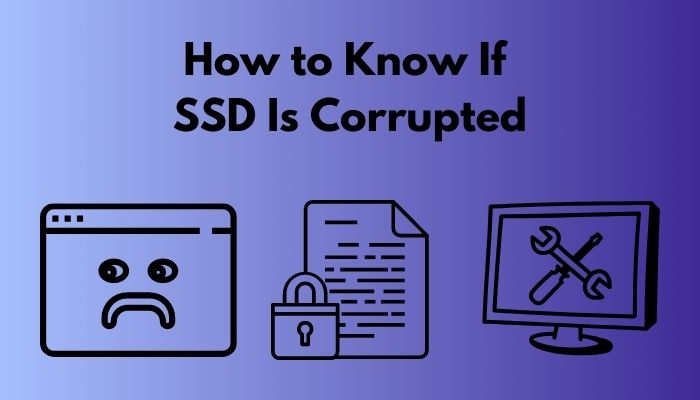
Fear not as I will be giving you all the symptoms here:
1. Errors Caused By Bad Blocks
Like bad sectors in HDDs, there are bad blocks in SSDs. Your PC shows an error message when it takes an unusually long time to read or save data on the drive and ends up in failure.
Some typical symptoms of bad blocks are:
- A file cannot be written or read in the drive
- Your PC/file system needs to be repaired
- Running applications sometimes freeze or crash
- Often showing error while moving files
- System running slow, more specifically when working with large files
If these symptoms are found happening to your system often, then you should diagnose
your SSD with software and physically as soon as possible.
Here’s a complete guide on is SSD Portable.
2. Files Cannot Be Read or Written
There are two ways that this bad block can work.
The first one is while you try to write something to the drive, but the bad block system refuses to write to drive. For this problem, your data has not been written in the first place, so it is not corrupted. The system will automatically solve the problem. If not, then try to write in another place, and copying that to the desired location should work.
Because of the second bad block, the system cannot read the written data. In this case, unfortunately, the data cannot be accessed easily. This is the worst. You can use some software to retrieve some data but get your hopes up.
3. The File System Needs Repair
Sometimes a blue screen pops up saying ‘Your PC needs to be repaired’ on your screen. Sometimes it occurs because of not shutting down your PC properly. However, it might be a sign of your SSD being corrupted or a problem in the connector ports.
Thankfully the computer OS comes with a built-in repair tool to solve this problem. After restarting the OS will lead you to solve the problem step by step. Windows, macOS, and Linux every OS have this feature.
4. Crashes During Boot
If the PC crashes during the boot process and starts working fine after hitting the reset button a couple of times, you most likely have a dying drive. So to be on the safe side, you should back up your data somewhere else and prepare to buy a new one.
You can also check SSD problems with some diagnostic tools. I will suggest formatting the drive if you have backed up your data.
Also check our exclusive tutorial on is SSD compatible with all motherboards.
5. Read-Only Error
Not many users face this, but some have claimed that they have faced this problem. The SSD refuses to write any kind of data on it, and however, it can still work in read-only mode. So for every purpose, you might think that the drive is dead, but your data can be retrieved.
So to retrieve the data, you can try connecting the drive as an external drive to some other pc and copy the data to another drive to back up your important stuff.
How to Repair SSD in Windows 10 Manually
There are quite some ways to fix your SSD, which include easy and complex processes. Here I will be explaining how you can fix your SSD manually by updating firmware, drivers or using the Command Prompt.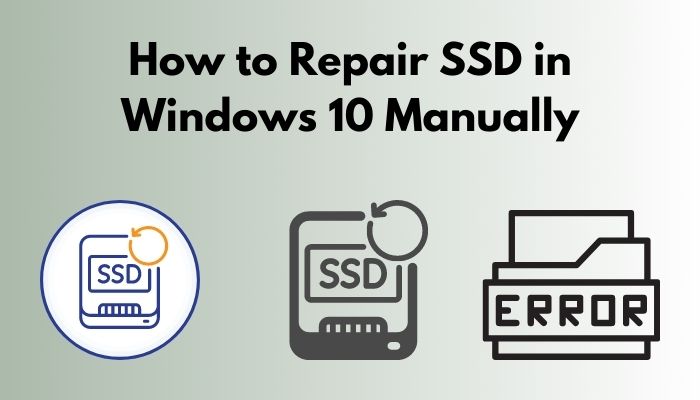
Here are the steps to repair SSD in Windows 10:
1. Update SSD’s Firmware
To update Firmware, follow these steps:
- Press Windows and X key together and navigate to device manager
- Click on “Disk drives” > right-click the SSD drive > select “Properties”. Choose “Details” tab > click the drop-down menu under Property > choose “Hardware Ids” and click “OK” to save the settings.
- Run the SSD firmware update tool and follow the on-screen instructions to complete the process.
Follow our guide to know is SSD affected by magnets.
2. Update SSD Drivers
To update the SSD drivers, follow these steps:
- Press Windows and X key together and navigate to device manager
- Click on “Disk drives” and right-click your SSD to choose “Update driver.” Then, follow the on-screen instructions to update SSD’S driver. After finishing the process restart the computer.
3. Run CHKDSK to Fix File System Error
To use command prompt for fixing the problem, follow these steps:
- Press Windows key and search for ‘Command prompt’ and run it as administrator
- Type: chkdsk C: /f /r /x in Command Prompt and hit Enter.
Note: C: should be the drive letter of the SSD or HDD drive that is corrupted. After the process is finished, type exit and press enter to close the prompt.
How to Repair SSD Using an SSD Repair Tool
If the previous three methods do not fix the problem, you can use an SSD repair tool such as ‘EaseUs Partition Master’ and ‘AOMEI Partition Assistant Standard’. These softwares are free of cost to use for basic operations.
Here I will show you how to use EaseUs Partition Master for fixing your SSD.
1. Check and Fix File System
Here are the steps to check and fix file system:
- Right-click on the partition that has a problem.
- Choose “Advanced” and click “Check File System”.
- In the Check File System window, check the “Try to fix errors if found” option.
- Hit “Start” to check errors on your partition.
2. Rebuild MBR
If the master boot record is damaged on SSD, it will fail to boot up. The system will prompt “Disk boot failure, Insert system disk and press enter” to tell you that the boot partition hard disk cannot be found or there is no boot file on the hard disk. In this case, directly install EaseUS Partition Master and use its “Rebuild MBR” feature to resolve the problem.
Now, if the SSD is your system disk, then your PC may not even boot properly. This time you have to create an EaseUS Partition Master WinPE bootable disk to rebuild MBR.
Note: If your disk is not MBR, this method may not work. So having a GPT disk, this method will not work.
Please follow these steps for the process:
Step 1. Create a WinPE bootable disk
- Launch EaseUS Partition Master and click “WinPE Creator”. Select to create the bootable disk on a USB drive. If your computer has a CD/DVD drive, you can also create the bootable disk to CD/DVD.
- Click “Proceed” to finish the process.
Step 2. Boot EaseUS Partition Master Bootable USB
- Connect the bootable USB or CD/DVD to your PC.
- Press F2 or Del when you restart the computer to enter the BIOS screen. Set and boot your computer from “Removable Devices” or “CD-ROM Drive”. And then EaseUS Partition Master will run automatically.
Step 3. Rebuild MBR
- Right-click the disk whose MBR is damaged. Choose “Rebuild MBR” to continue.
- Select the type of MBR with the current operating system. Then, click “OK”.
- Click the “Execute Operation” button at the top-left corner and click “Apply” to build the MBR. After that, your computer can boot normally again.
3. Format or Erase the Damaged SSD
Now, if you cannot fix your SSD through all the ways stated above, you can have a last chance to fix the SSD by formatting the whole drive.
In this regard, if you also want to save your data, you can have the premium version of the software and use ‘secure erasing’.
Launch EaseUS Partition Master, right-click on the SSD disk or drive, choose Wipe Data or Format and wait for the process to accomplish.
Final thoughts
Hope this article helped you to fix your SSD problem and know if your SSD is endangered or not. If you feel like you have learned something new, please let us know. If you have any other queries, then please let me know. I will be more than happy to help you!

